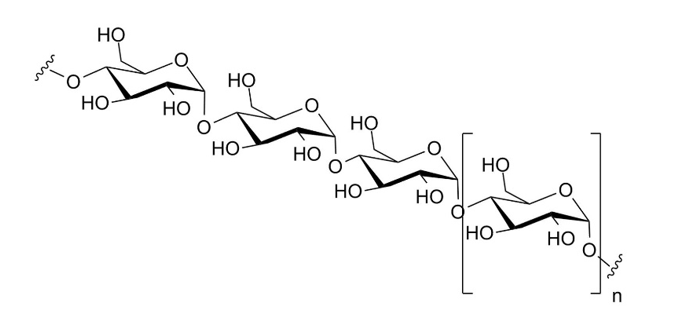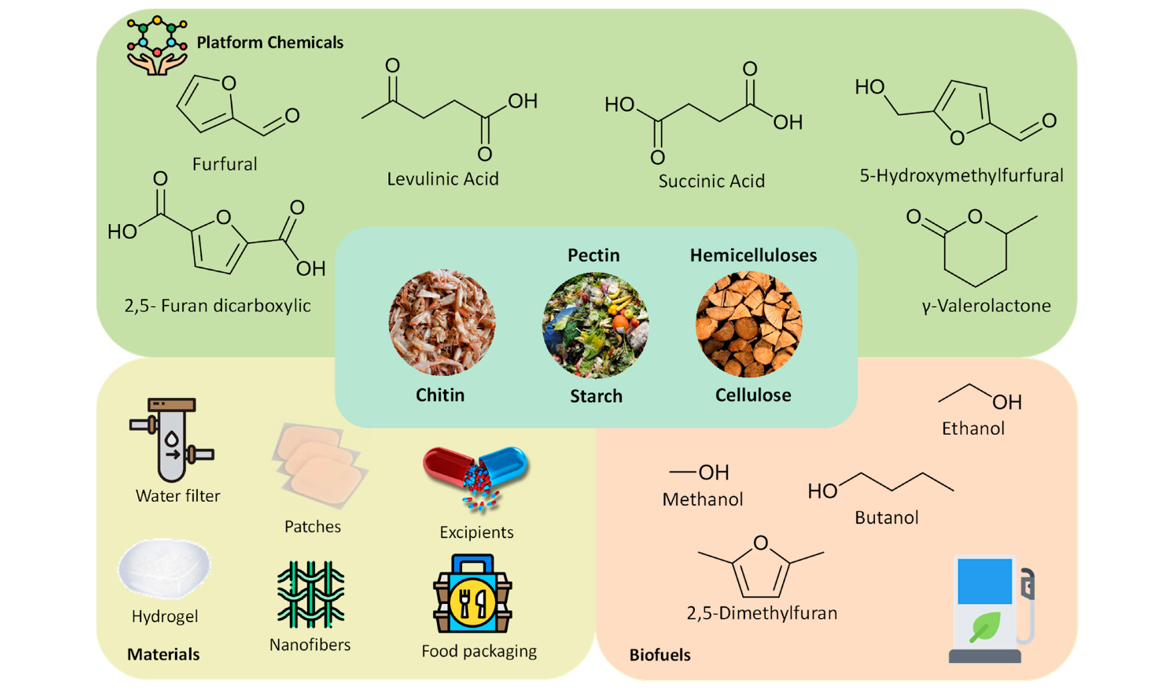Polysaccharides, along with nucleic acids, proteins and lipids, are the four basic substances of living organisms and play an important role in many life activities. Polysaccharides have a variety of biological activities such as immunomodulation, antitumor, hypoglycemia, hypolipidemia, antiviral, scavenging of oxidative free radicals, and delaying aging.

Polysaccharides are polymeric sugar polymeric carbohydrates consisting of sugar chains bound by glycosidic bonds and at least more than 10 monosaccharides. There are glucose, mannan, galactan, etc., which are composed of one type of monosaccharide; hetero polysaccharide, which is composed of more than two types of monosaccharides; and glucosamine glucan, which contains amino sugars, etc., and there are indeed a variety of chemical structures.
Extraction of polysaccharides
Polysaccharides are linked to the cell wall or intercellular matrix by hydrogen or ionic bonds. Different extraction methods can be used for different polysaccharides. Usually, hot water, acid, alkali and ethanol are used as solvents, and crude extraction is performed with the assistance of microwave or ultrasound. Commonly used methods are supercritical fluid extraction and complex enzyme-assisted extraction techniques. Complex enzymes can specifically degrade the cell wall and the barrier of intracellular macromolecule solubilization in milder conditions to accelerate the release of polysaccharides, while the reaction can be controlled by changing the system conditions according to the properties of enzymes.
Impurity removal from polysaccharides
Usually, the crude polysaccharide extracts obtained by extraction contain impurities such as inorganic salts, lipids, proteins and low molecular non-polar substances. For low molecular weight small molecule impurities can be filtered out using dialysis. Proteins are usually removed by protease method, Sevag method, TCA method, and trifluoro-trichloroethane method. Fats can be removed by organic solvents such as ethanol, ether and petroleum ether. Adsorption and oxidation are the common methods to remove pigment impurities.
Isolation and purification of polysaccharides
The more commonly used methods are sedimentation, chromatography, zone electrophoresis, ultracentrifugation and other biochemical analysis methods.
Polysaccharide analysis
Nowadays, chemical titration, colorimetric and chromatographic methods are commonly used for qualitative and quantitative analysis of polysaccharides.
- Colorimetric method:
The polysaccharide is first degraded into monosaccharide or oligosaccharide, and then quantitatively analyzed by UV-Vis spectrophotometry and standard curve.
- Titration method:
Felling reagent titration method: Initially used for qualitative analysis of reducing sugars, later developed and applied to quantitative analysis, it is the international law of reducing sugar determination.
Potassium permanganate titration method: High accuracy, good reproducibility, good stability. It can be used to determine the Felling's method can not be determined by the color sample.
- Chromatography:
The components of the mixture to be measured have different physical properties, resulting in differences in their partition coefficients between the stationary and mobile phases. As the material to be measured passes through the chromatographic column, the sample is repeatedly partitioned between the two phases, resulting in a difference in velocity during adsorption and resolution. After flowing through a certain column length they are separated from each other and finally enter the detector. The ion flow signals generated by each component are amplified and their corresponding peaks are displayed on the recorder for the purpose of sample analysis.
It mainly includes gas chromatography (GC)/high performance liquid chromatography (HPLC) coupled with mass spectrometry.
GC-MS /MS is sensitive, rapid, and highly discriminatory, and is often used for qualitative and quantitative analysis and molecular weight and molecular structure determination of unknown components in mixtures.
LC is often used for analysis when the sample is unstable to heat and has poor recovery. High performance liquid chromatography with refractive index of difference (HPLC-RID) allows continuous determination of sample concentration by the change of the photorefractive index of the column effluent. The method does not require derivatization and allows direct detection of polysaccharides.
High performance anion exchange chromatography with pulsed amperometric detection (HPAEC-PAD) is a common method for analyzing sugar content and its constituents because of its high sensitivity, high column efficiency and large span of detection orders.
- Nuclear magnetic resonance spectroscopy: Detection by atomic leap resonance.
As one of the leading companies in the omics field with over years of experience in omics study, Creative Proteomics provides a series of service for polysaccharides characterization as below.
Molecular Weight Determination of Polysaccharide
Determination of the Absolute Configuration
Identification of the Anomeric Configuration
Polysaccharide Sequencing
Reference
Morais, E. S., Lopes, A. M., et al. (2020). Use of ionic liquids and deep eutectic solvents in polysaccharides dissolution and extraction processes towards sustainable biomass valorization. Molecules, 25(16), 3652.
